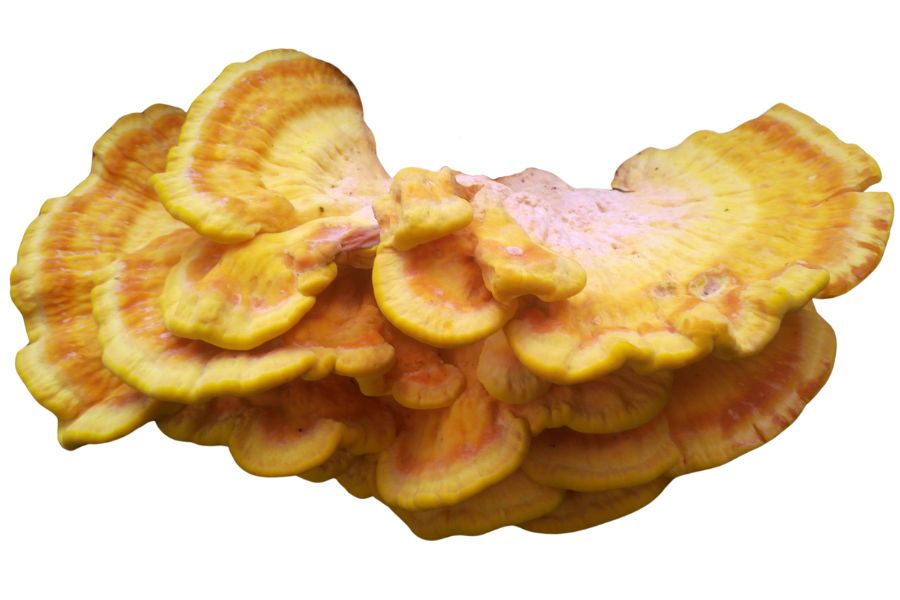Georgia’s forests, riverbanks, and meadows hold more than just scenic beauty—they’re home to some of the South’s most valuable wild edible plants.
You can spot golden clusters of chanterelle mushrooms after summer rain and dig up flavorful wild onions in sunny open spaces. Even the pawpaw tree, with its custard-like fruit, grows wild along creekbeds if you know where to look.
What makes these finds especially valuable isn’t just their flavor, but how rarely most people recognize them. The woods might look quiet, but hidden beneath the canopy are ingredients chefs would pay good money for. And not all of them are fruits or mushrooms—some edible greens are just as sought after, if you know the season.
Plenty more valuable plants are growing wild in the state, and they often go unnoticed by anyone not actively looking. The right eye and timing can turn a short walk into a basket full of edible possibilities. Georgia offers an enormous variety if you know what to look for.
What We Cover In This Article:
- What Makes Foreageables Valuable
- Foraging Mistakes That Cost You Big Bucks
- The Most Valuable Forageables in the State
- Where to Find Valuable Forageables in the State
- When to Forage for Maximum Value
- The extensive local experience and understanding of our team
- Input from multiple local foragers and foraging groups
- The accessibility of the various locations
- Safety and potential hazards when collecting
- Private and public locations
- A desire to include locations for both experienced foragers and those who are just starting out
Using these weights we think we’ve put together the best list out there for just about any forager to be successful!
A Quick Reminder
Before we get into the specifics about where and how to find these plants and mushrooms, we want to be clear that before ingesting any wild plant or mushroom, it should be identified with 100% certainty as edible by someone qualified and experienced in mushroom and plant identification, such as a professional mycologist or an expert forager. Misidentification can lead to serious illness or death.
All plants and mushrooms have the potential to cause severe adverse reactions in certain individuals, even death. If you are consuming wild foragables, it is crucial to cook them thoroughly and properly and only eat a small portion to test for personal tolerance. Some people may have allergies or sensitivities to specific mushrooms and plants, even if they are considered safe for others.
The information provided in this article is for general informational and educational purposes only. Foraging involves inherent risks.
What Makes Foreageables Valuable
Some wild plants, mushrooms, and natural ingredients can be surprisingly valuable. Whether you’re selling them or using them at home, their worth often comes down to a few key things:
The Scarcer the Plant, the Higher the Demand
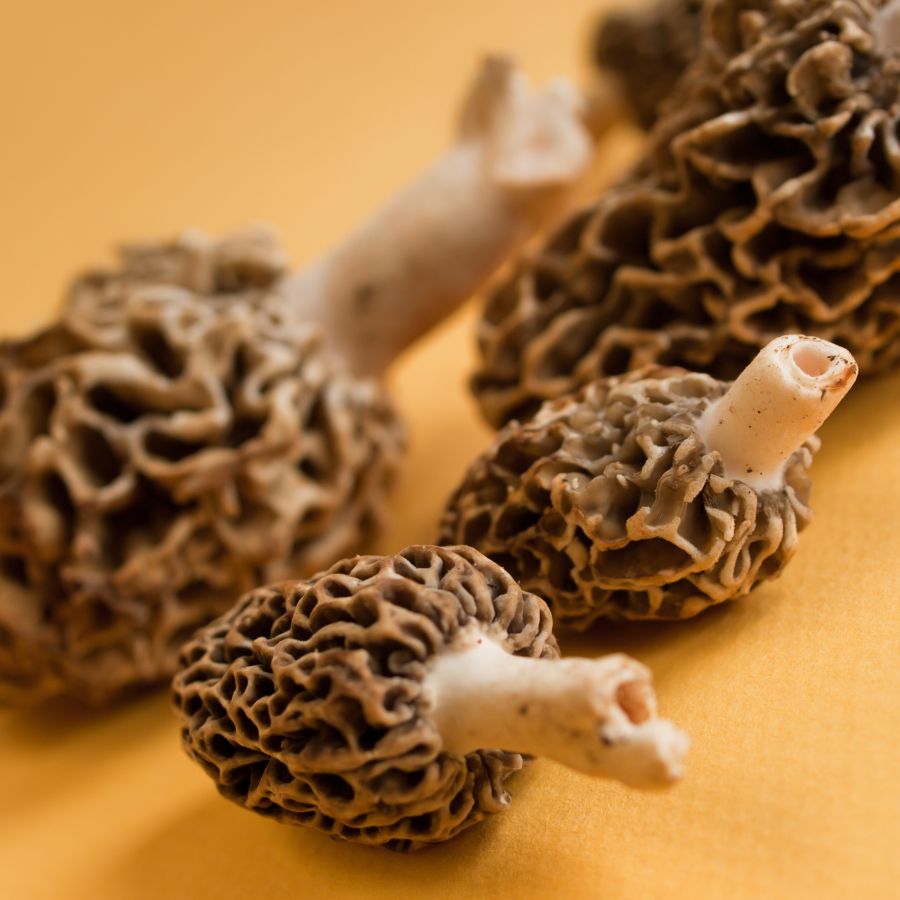
Some valuable forageables only show up for a short time each year, grow in hard-to-reach areas, or are very difficult to cultivate. That kind of rarity makes them harder to find and more expensive to buy.
Morels, truffles, and ramps are all good examples of this. They’re popular, but limited access and short growing seasons mean people are often willing to pay more.
A good seasonal foods guide can help you keep track of when high-value items appear.
High-End Dishes Boost the Value of Ingredients
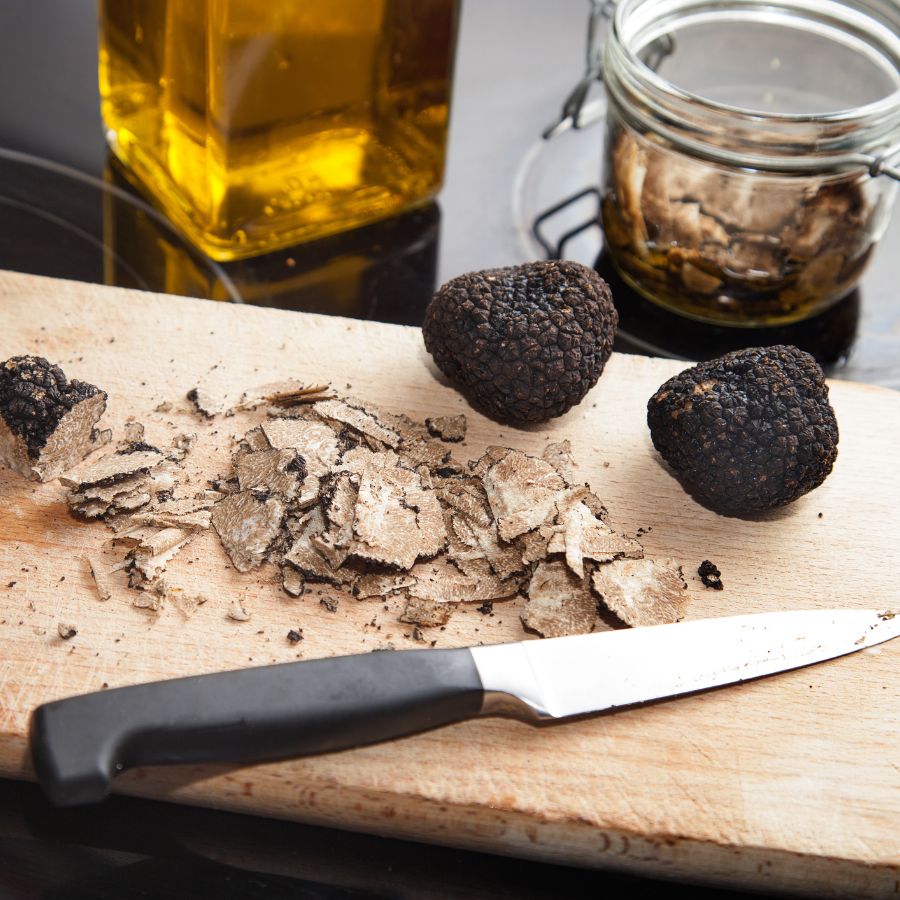
Wild ingredients that are hard to find in stores often catch the attention of chefs and home cooks. When something unique adds flavor or flair to a dish, it quickly becomes more valuable.
Truffles, wild leeks, and edible flowers are prized for how they taste and look on a plate. As more people try to include them in special meals, the demand—and the price—tends to rise.
You’ll find many of these among easy-to-identify wild mushrooms or herbs featured in fine dining.
Medicinal and Practical Uses Drive Forageable Prices Up
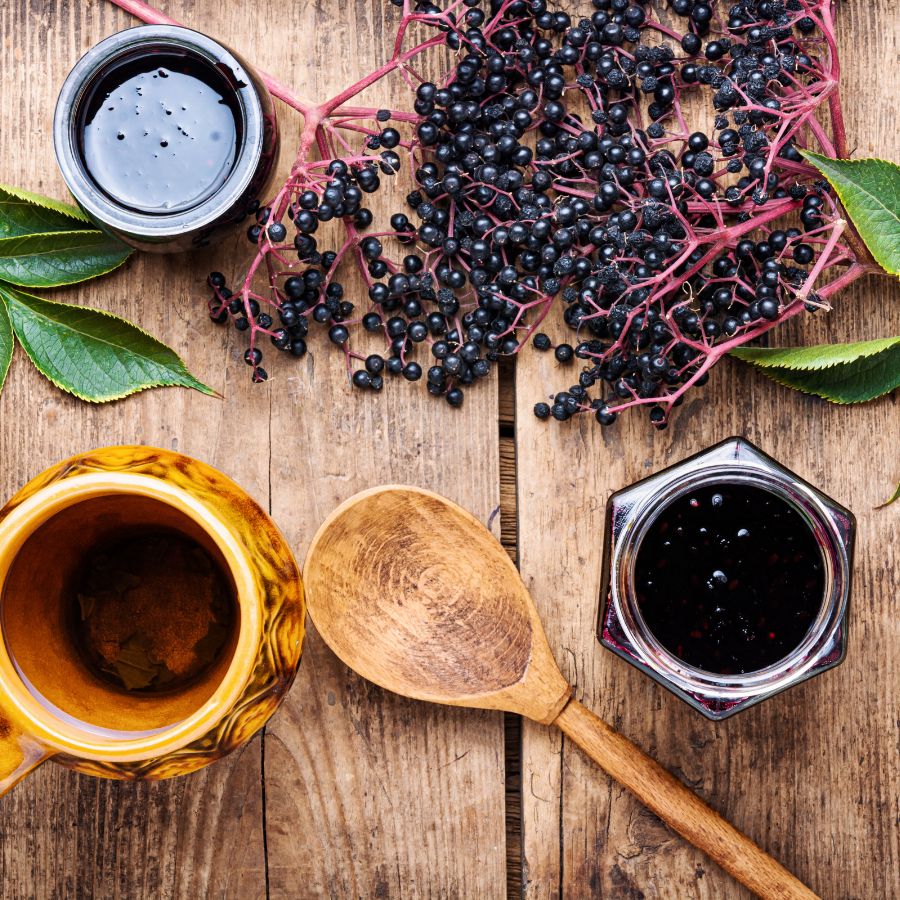
Plants like ginseng, goldenseal, and elderberries are often used in teas, tinctures, and home remedies. Their value comes from how they support wellness and are used repeatedly over time.
These plants are not just ingredients for cooking. Because people turn to them for ongoing use, the demand stays steady and the price stays high.
The More Work It Takes to Harvest, the More It’s Worth
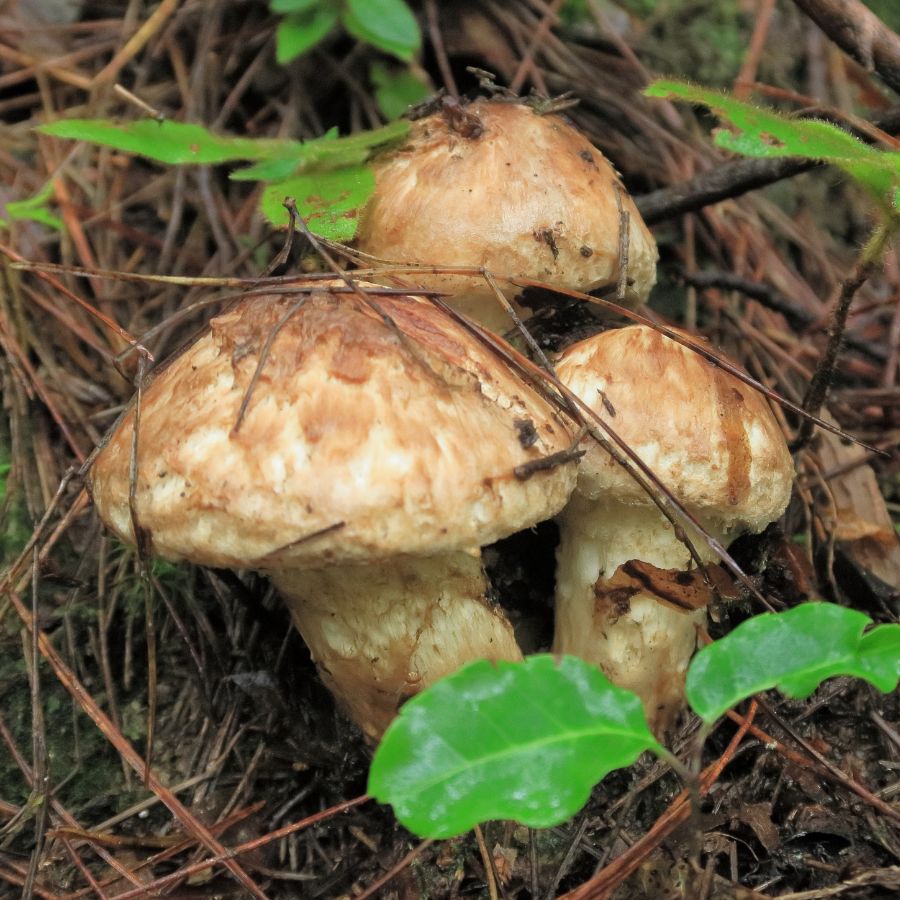
Forageables that are hard to reach or tricky to harvest often end up being more valuable. Some grow in dense forests, need careful digging, or have to be cleaned and prepared before use.
Matsutake mushrooms are a good example, because they grow in specific forest conditions and are hard to spot under layers of leaf litter. Wild ginger and black walnuts, meanwhile, both require extra steps for cleaning and preparation before they can be used or sold.
All of that takes time, effort, and experience. When something takes real work to gather safely, buyers are usually willing to pay more for it.
Foods That Keep Well Are More Valuable to Buyers
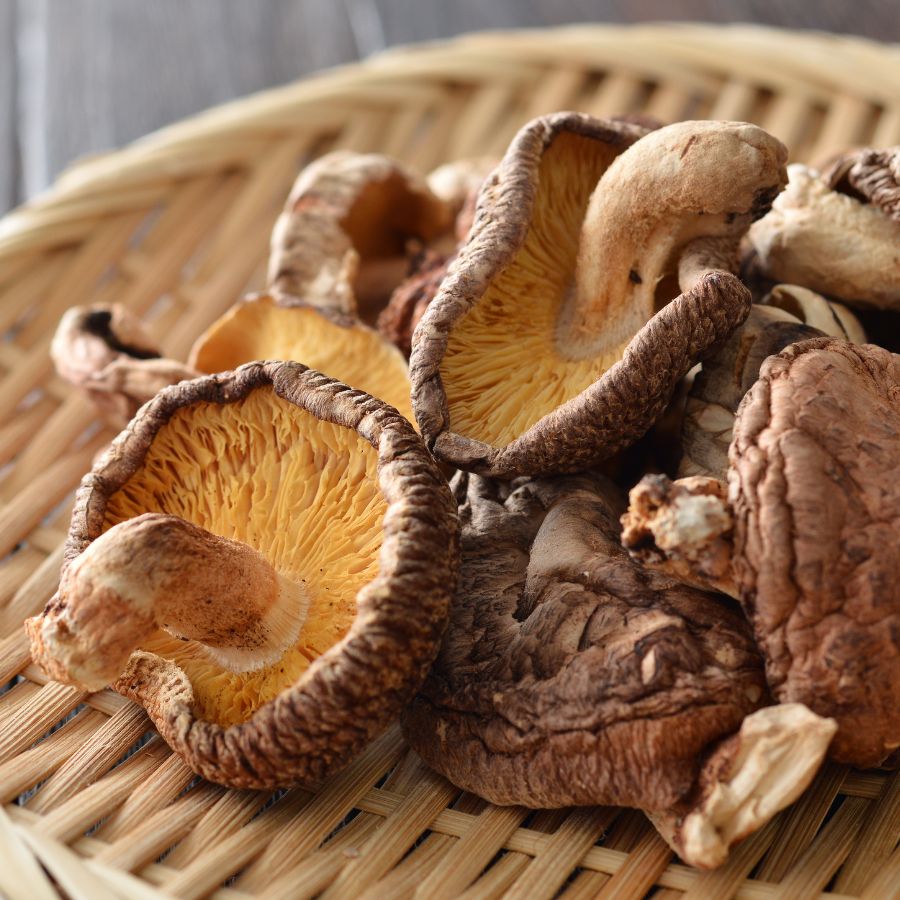
Some forageables, like dried morels or elderberries, can be stored for months without losing their value. These longer-lasting items are easier to sell and often bring in more money over time.
Others, like wild greens or edible flowers, have a short shelf life and need to be used quickly. Many easy-to-identify wild greens and herbs are best when fresh, but can be dried or preserved to extend their usefulness.
A Quick Reminder
Before we get into the specifics about where and how to find these mushrooms, we want to be clear that before ingesting any wild mushroom, it should be identified with 100% certainty as edible by someone qualified and experienced in mushroom identification, such as a professional mycologist or an expert forager. Misidentification of mushrooms can lead to serious illness or death.
All mushrooms have the potential to cause severe adverse reactions in certain individuals, even death. If you are consuming mushrooms, it is crucial to cook them thoroughly and properly and only eat a small portion to test for personal tolerance. Some people may have allergies or sensitivities to specific mushrooms, even if they are considered safe for others.
The information provided in this article is for general informational and educational purposes only. Foraging for wild mushrooms involves inherent risks.
Foraging Mistakes That Cost You Big Bucks
When you’re foraging for high-value plants, mushrooms, or other wild ingredients, every decision matters. Whether you’re selling at a farmers market or stocking your own pantry, simple mistakes can make your harvest less valuable or even completely worthless.
Harvesting at the Wrong Time
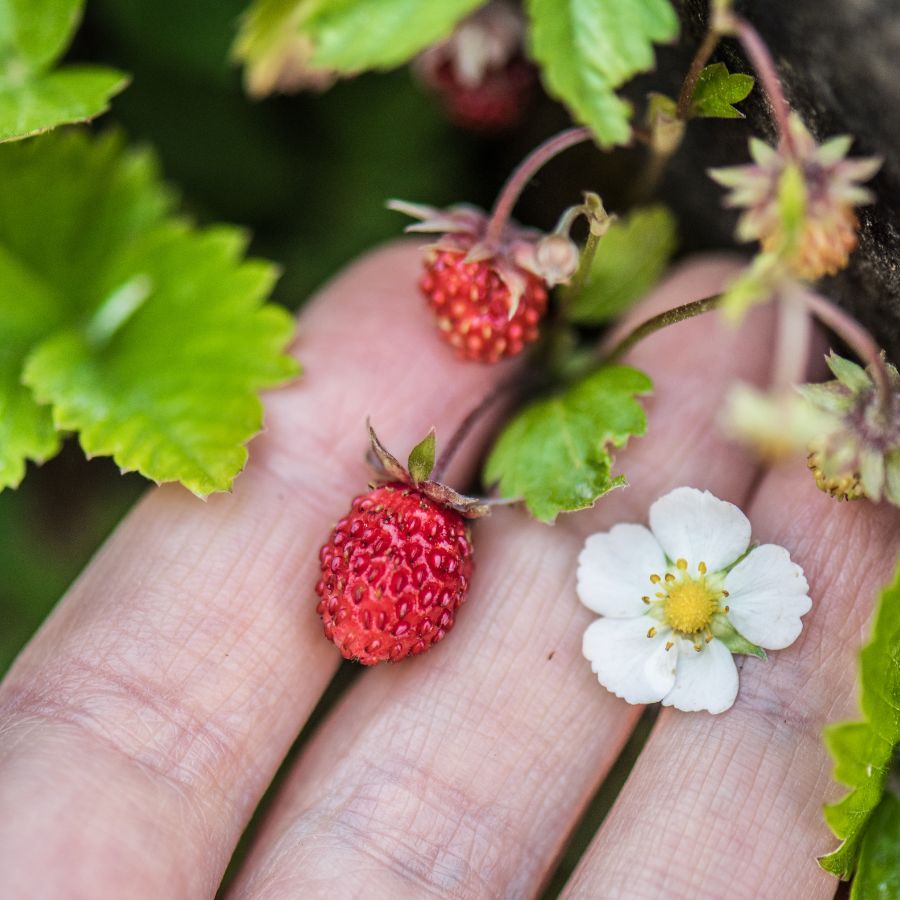
Harvesting at the wrong time can turn a valuable find into something no one wants. Plants and mushrooms have a short window when they’re at their best, and missing it means losing quality.
Morels, for example, shrink and dry out quickly once they mature, which lowers their weight and price. Overripe berries bruise in the basket and spoil fast, making them hard to store or sell.
Improper Handling After Harvest
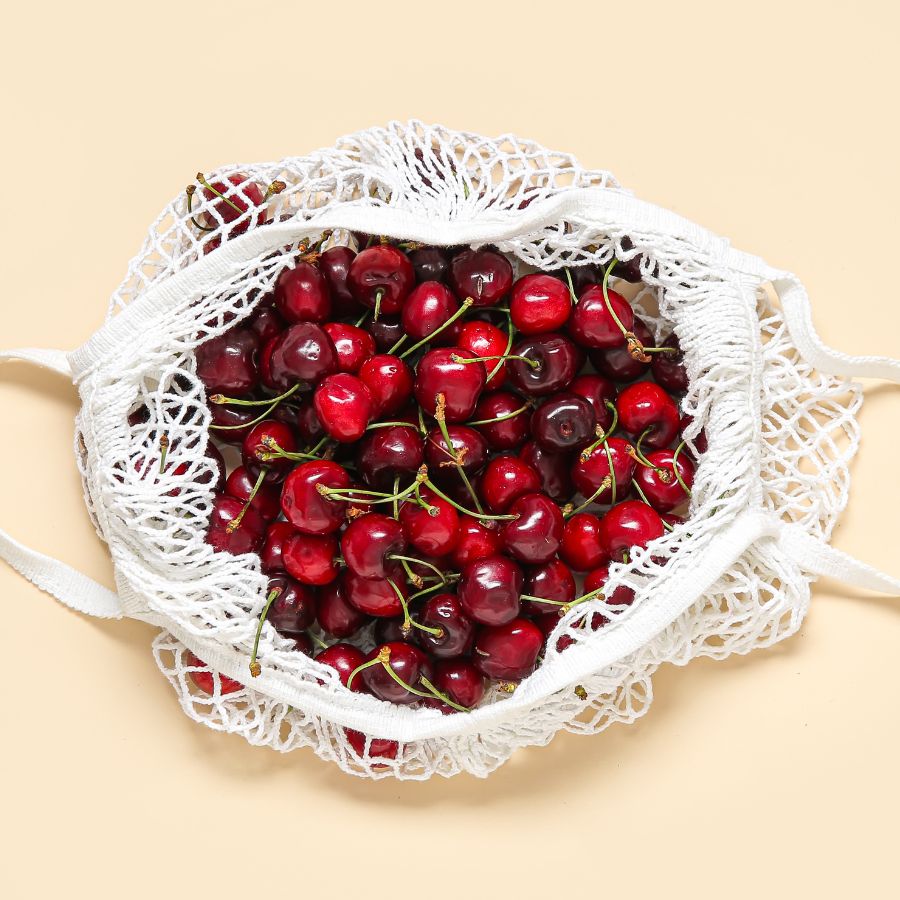
Rough handling can ruin even the most valuable forageables. Crushed mushrooms, wilted greens, and dirty roots lose both their appeal and their price.
Use baskets or mesh bags to keep things from getting smashed and let air circulate. Keeping everything cool and clean helps your harvest stay fresh and look better for longer.
This is especially important for delicate items like wild roots and tubers that need to stay clean and intact.
Skipping Processing Steps
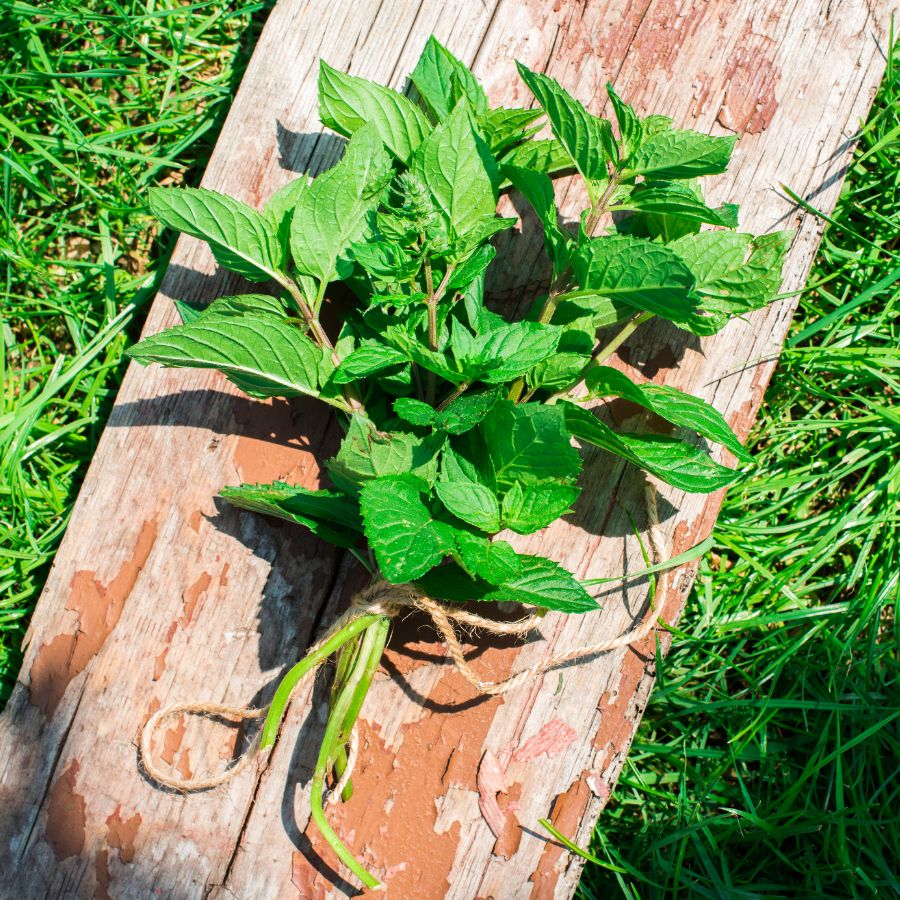
Skipping basic processing steps can cost you money. A raw harvest may look messy, spoil faster, or be harder to use.
For example, chaga is much more valuable when dried and cut properly. Herbs like wild mint or nettle often sell better when bundled neatly or partially dried. If you skip these steps, you may end up with something that looks unappealing or spoils quickly.
Collecting from the Wrong Area
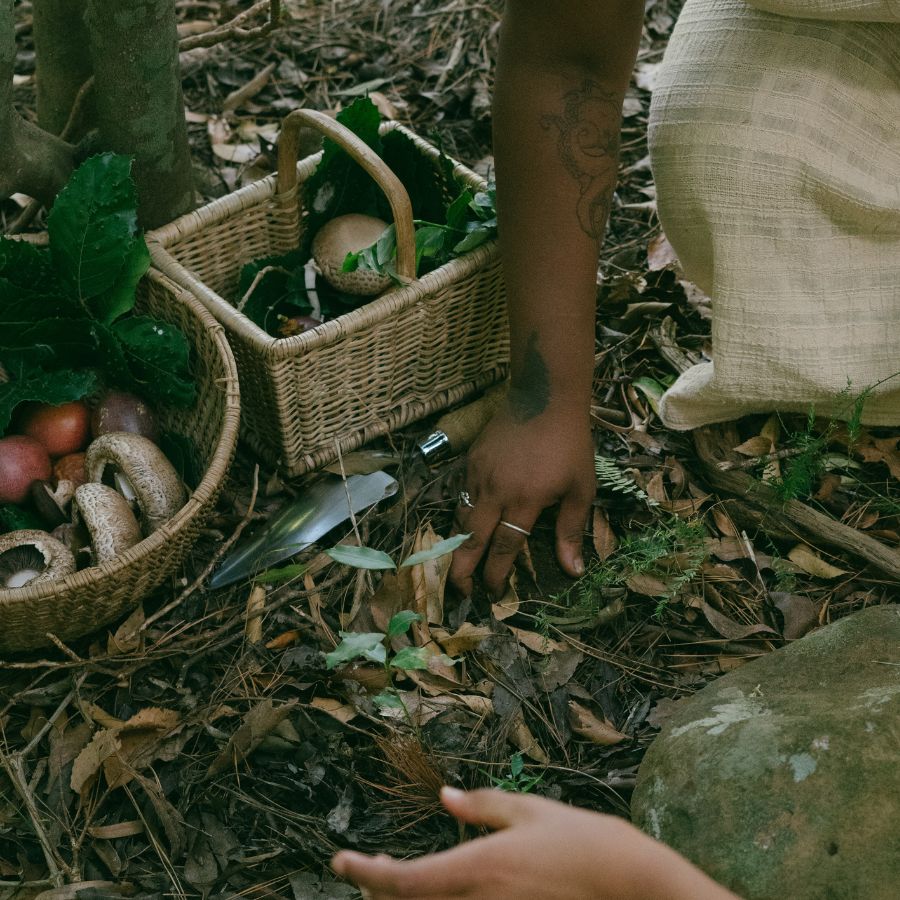
Harvesting in the wrong place can ruin a good find. Plants and mushrooms pulled from roadsides or polluted ground may be unsafe, no matter how fresh they look.
Buyers want to know their food comes from clean, responsible sources. If a spot is known for overharvesting or damage, it can make the whole batch less appealing.
These suburbia foraging tips can help you find overlooked spots that are surprisingly safe and productive.
Not Knowing the Market
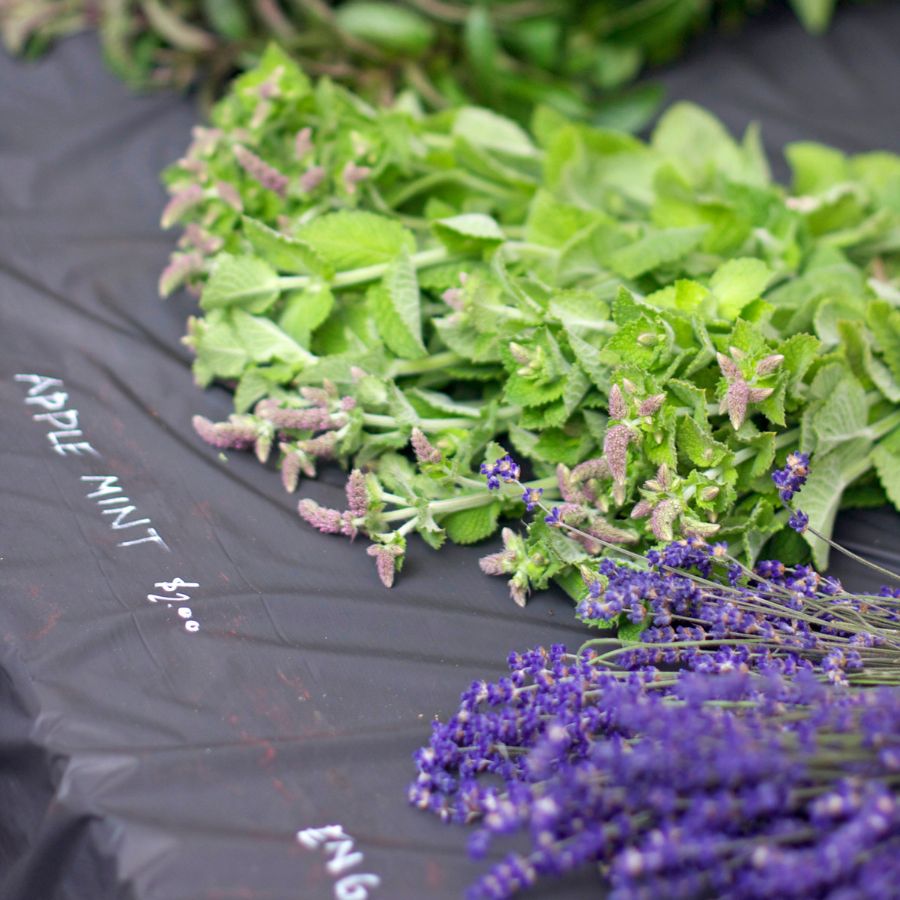
A rare plant isn’t valuable if nobody wants to buy it. If you gather in-demand species like wild ramps or black trumpets, you’re more likely to make a profit. Pay attention to what chefs, herbalists, or vendors are actually looking for.
Foraging with no plan leads to wasted effort and unsold stock. Keeping up with demand helps you bring home a profit instead of a pile of leftovers.
You can also brush up on foraging for survival strategies to identify the most versatile and useful wild foods.
Before you head out
Before embarking on any foraging activities, it is essential to understand and follow local laws and guidelines. Always confirm that you have permission to access any land and obtain permission from landowners if you are foraging on private property. Trespassing or foraging without permission is illegal and disrespectful.
For public lands, familiarize yourself with the foraging regulations, as some areas may restrict or prohibit the collection of mushrooms or other wild foods. These regulations and laws are frequently changing so always verify them before heading out to hunt. What we have listed below may be out of date and inaccurate as a result.
The Most Valuable Forageables in the State
Some of the most sought-after wild plants and fungi here can be surprisingly valuable. Whether you’re foraging for profit or personal use, these are the ones worth paying attention to:
Morel (Morchella americana)
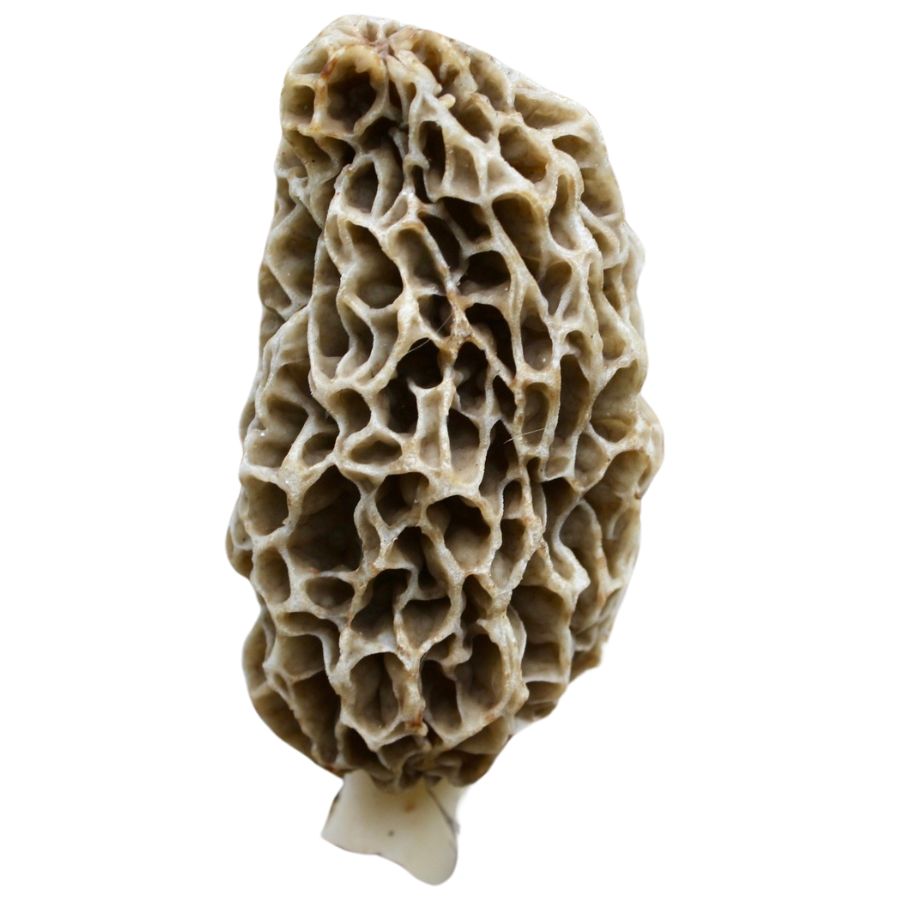
Morel mushrooms have a honeycomb-like surface with deep pits and ridges. The cap is fully attached to the stem, which helps set them apart from dangerous lookalikes like false morels that often have wrinkled, lobed caps and loose or cottony interiors.
The rich, nutty flavor and slightly chewy texture make morels a favorite in high-end kitchens. Many people sauté them in butter, stuff them, or dry them for later use because they hold their flavor extremely well.
Always cook morels thoroughly because raw ones can cause stomach upset, even when they look perfectly normal.
Morels are highly prized by chefs and home cooks, sometimes selling for over $50 per pound fresh and even more when dried.
Part of what makes morels so valuable is how hard they are to cultivate and find. They often grow in specific, unpredictable places, and their short harvesting window drives up both the demand and the price.
Chanterelle (Cantharellus cibarius)
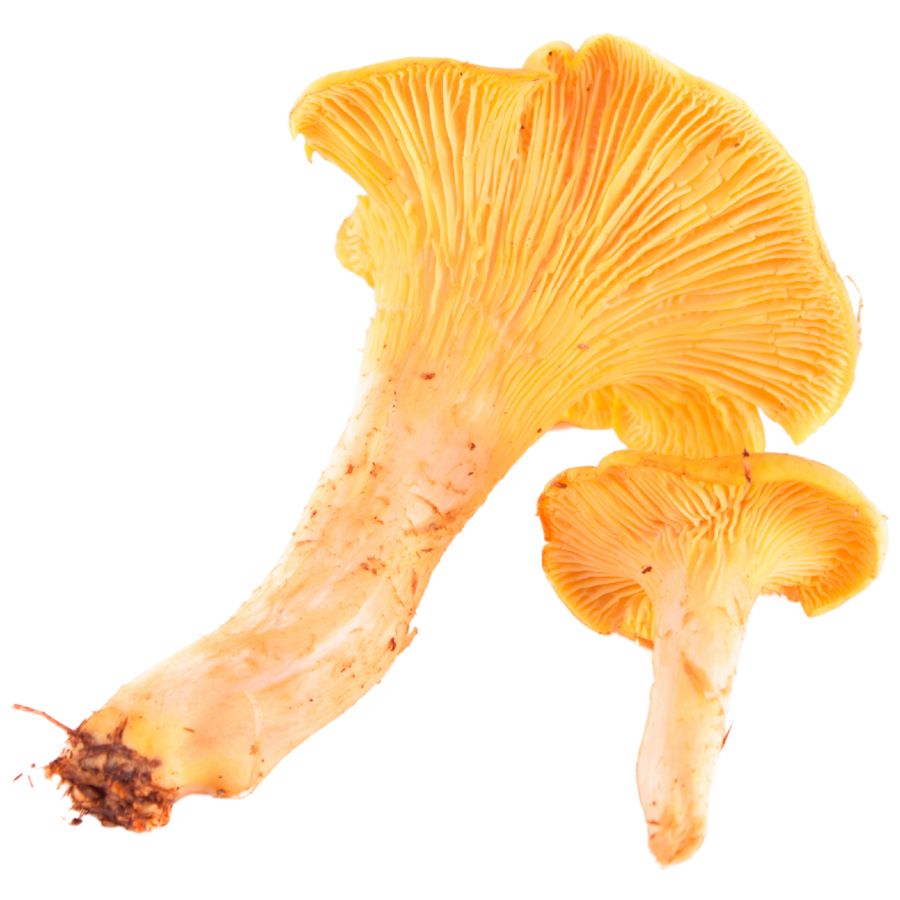
Golden chanterelles, also called egg mushrooms or girolles, are funnel-shaped and usually a bright yellow-orange with false gills that appear as deep, forked wrinkles. They have a fruity smell, almost like apricots, and a dense, meaty texture when cooked.
The part you want is the whole cap and stem, both of which soften nicely in butter or cream-based dishes. Their flavor is rich and peppery, which makes them popular in risottos, sautés, and soups.
A common lookalike is the jack-o’-lantern mushroom, which glows faintly in the dark and has true gills instead of shallow ridges. That one will give you stomach cramps, so pay close attention to the gill structure and color.
Fresh chanterelles can sell for over $20 per pound at farmers markets and restaurants, especially when demand is high. Their shelf life is short, but you can extend it by drying or pickling them soon after harvest.
Lion’s Mane (Hericium erinaceus)
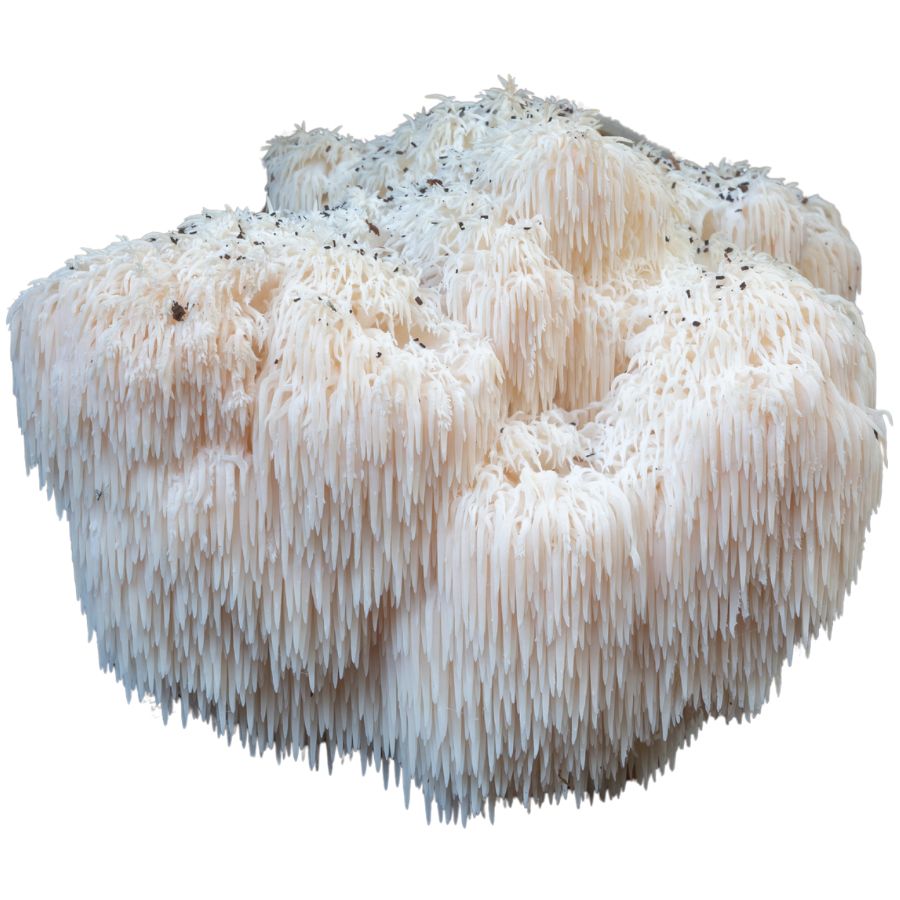
Lion’s mane mushrooms grow in white, shaggy clusters that hang like icicles from hardwood trees. The entire fruiting body is edible and has a soft, meaty texture that’s often compared to crab or lobster.
People value lion’s mane not just for the flavor but for how well it soaks up sauces in stir-fries, soups, or even pan-seared dishes. It’s usually sliced and cooked fresh, though it can be dried and rehydrated without losing much texture.
While it doesn’t have many dangerous lookalikes, some species of toothed fungi like bear’s head or comb tooth can resemble it. Those are also edible, but if a mushroom is discolored, mushy, or growing from the ground instead of wood, skip it.
Fresh lion’s mane sells for a high price at gourmet markets and restaurants because of its short shelf life and culinary demand. Its chewy bite and slightly sweet, nutty taste make it a favorite among chefs and home cooks alike.
Black Walnut (Juglans nigra)
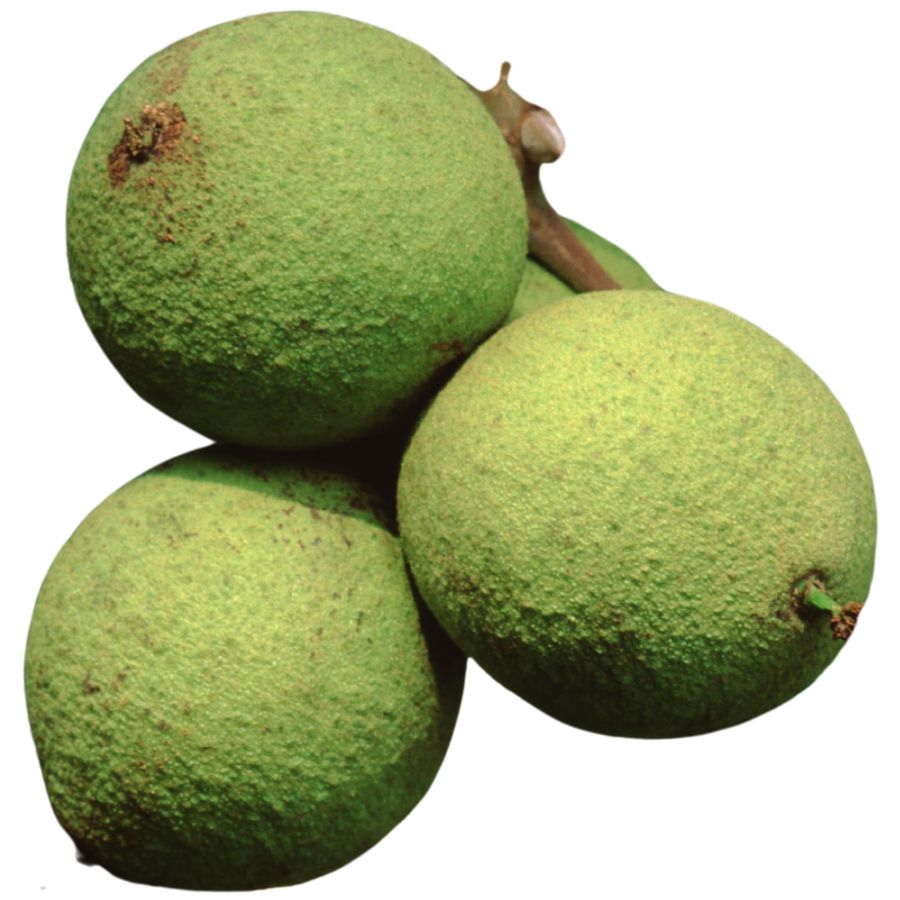
Black walnut grows a nut that’s prized for its strong, musky flavor and crunchy texture. The inner shell is extremely hard and often needs to be cracked with a vise or hammer to reach the oily, wrinkled seed inside.
Its nuts are most often roasted, chopped into desserts, or used in meat rubs and dressings. They’re also one of the few foraged tree nuts that can be stored long-term with very little processing.
The outer green husks leave a dark stain when bruised or broken open, and the nut itself is hidden inside a thick shell. While the fruit of the tree may resemble buckeye at first glance, black walnut leaves have a different shape and pattern, and buckeye seeds are toxic.
Prices stay high because harvesting takes time and experience, and the trees don’t lend themselves easily to large-scale production. Foragers and specialty food makers often pay a premium for wild black walnuts with intense flavor.
Pawpaw (Asimina triloba)
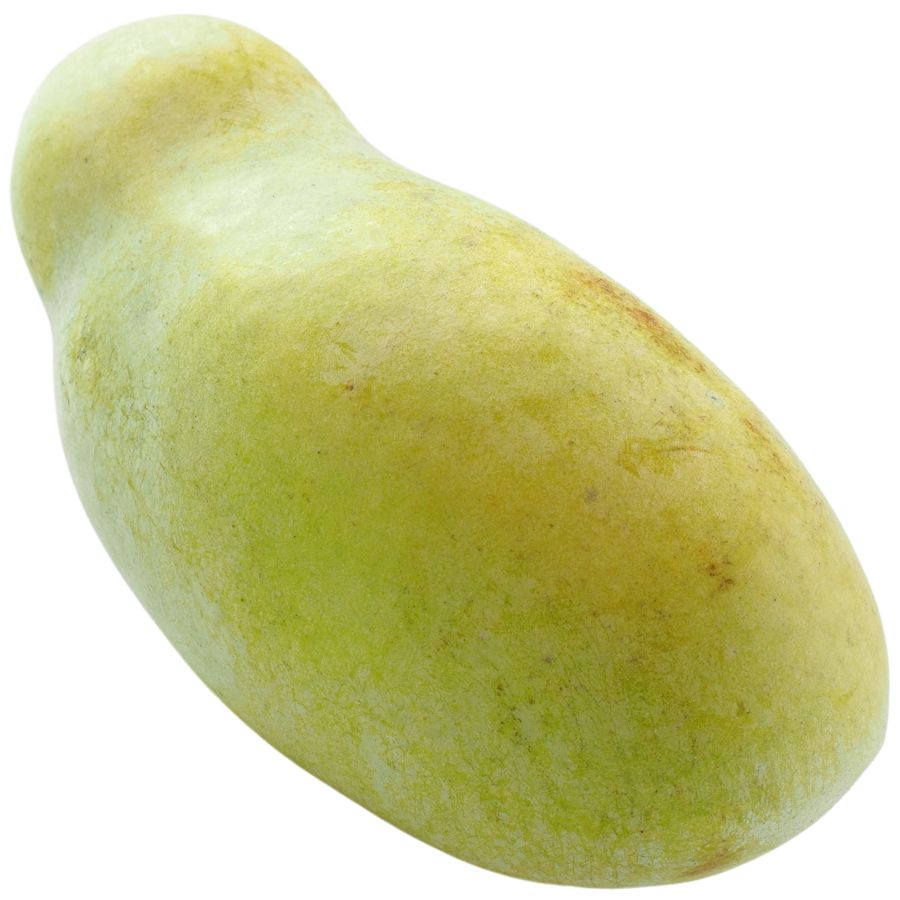
Pawpaw produces a green, mango-shaped fruit with soft yellow flesh inside and a taste that’s hard to forget. The flavor is rich and tropical, and the texture is thick like custard.
You’ll want to avoid the seeds and skin, but the pulp is edible and highly sought after. Some people cook it down into jams while others prefer it raw, straight from the peel.
There are other fruits in wooded areas that look similar, but pawpaw’s smell and size help separate it from anything potentially inedible. The way its fruits grow in clusters is also a giveaway.
Pawpaw isn’t commonly found in grocery stores, which makes it valuable for small growers and foragers. In-season, it can fetch a premium price at specialty food shops and farmers markets.
Elderberry (Sambucus canadensis)
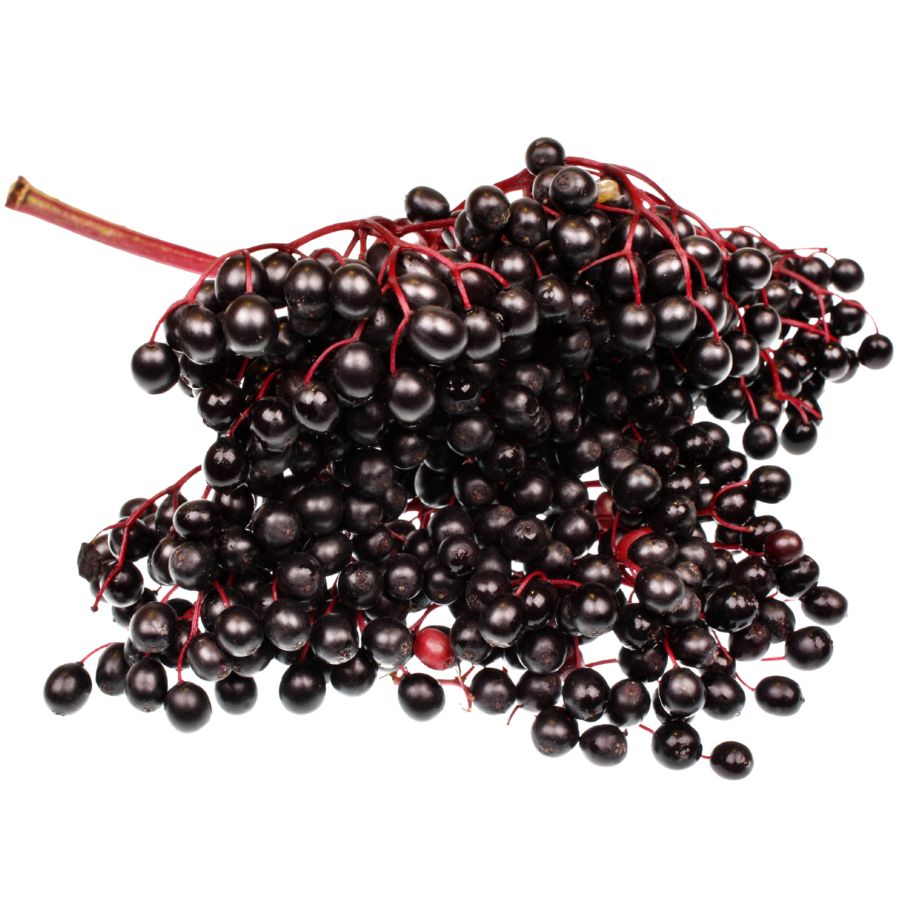
For centuries, elderberries has been gathered not just for food, but for making home remedies prized across the Southwest. Also called Mexican elder and tapiro, elderberry grows as a sprawling bush or small tree with clusters of tiny white flowers that turn into dusty blue-black berries.
There are toxic lookalikes you need to watch for, especially red elderberry, which has round clusters of bright red fruit. Elderberries grow in flatter, broader clusters and have a softer, more powdery appearance when ripe.
The berries have a deep, earthy flavor with a tart edge, and are usually cooked into jams, syrups, and baked goods to bring out their richness.
Make sure to avoid eating the raw berries, seeds, bark, or leaves because they can cause nausea unless they are properly cooked.
This plant stays valuable because the berries are used heavily in teas, tinctures, and syrups that people rely on for wellness, driving steady demand. Elderberries can also be dried and stored for months, making it even more profitable compared to foods that spoil quickly.
Groundnut (Apios americana)

Groundnut grows as a vining plant with compound leaves and reddish-purple flowers, but the part you’re after is buried underground. Its tubers are edible, protein-rich, and surprisingly high in calories compared to most wild plants.
They can be peeled and boiled like potatoes, or slow-roasted to bring out a nutty, slightly sweet taste. Some people mash them or slice them thin to fry into chips.
It’s easy to confuse groundnut with trailing wild beans or other legumes, especially if you’re only looking at the vines. The key difference is the string of bead-like tubers that groundnut sends down into the soil.
These tubers have drawn attention from permaculture growers and chefs for their nutritional value and earthy flavor. While not mass-produced, they can sell for over $15 per pound in niche food markets.
Chicken of the Woods (Laetiporus sulphureus)
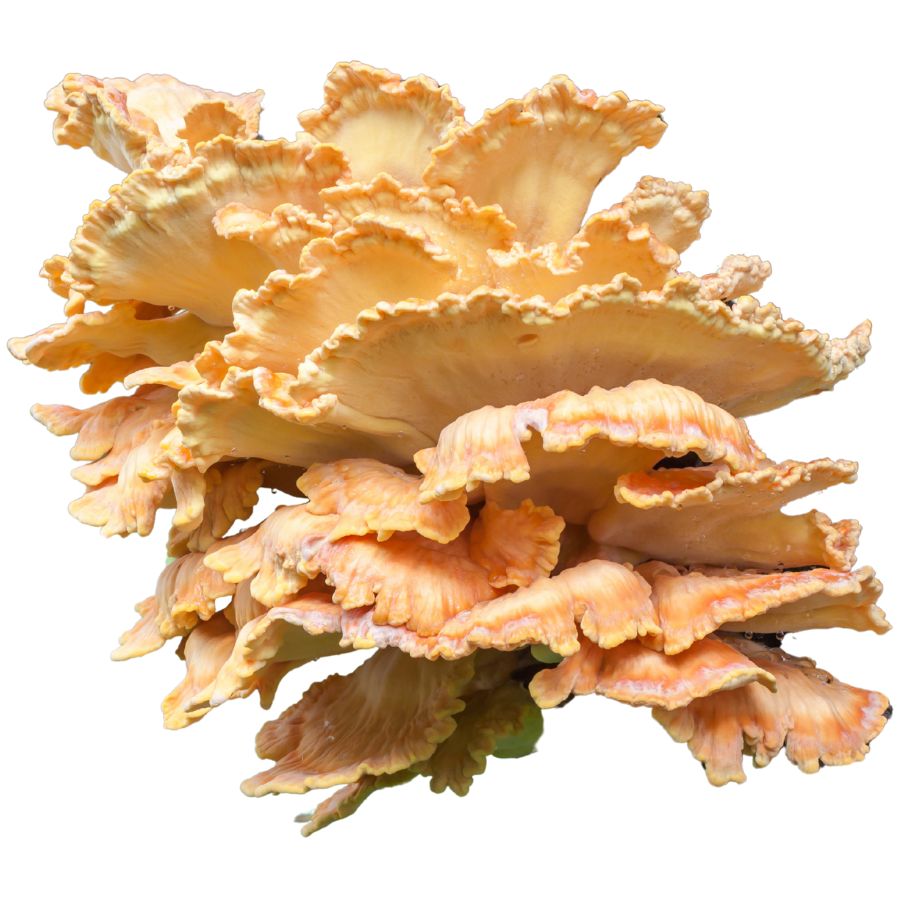
Chicken of the woods, also called sulfur shelf, grows in thick, shelf-like clusters with bright orange tops and yellow undersides. It develops on hardwood trees and fallen logs, forming a dense and slightly spongy mass.
Only the soft outer edges are typically eaten, while the older inner parts become tough and unpleasant. Its texture is meaty and chewy, and many people say it tastes a lot like chicken.
This mushroom doesn’t have gills and instead features tiny pores underneath, which helps separate it from toxic lookalikes like the jack-o’-lantern mushroom. The jack-o’-lantern has gills and glows faintly in the dark, which chicken of the woods does not.
Chicken of the woods is often sautéed, fried, or frozen for later, and can fetch a decent price at markets when fresh and tender. Just be careful—some people have reported mild stomach upset, especially when it’s harvested from conifers.
Oyster Mushroom (Pleurotus ostreatus)
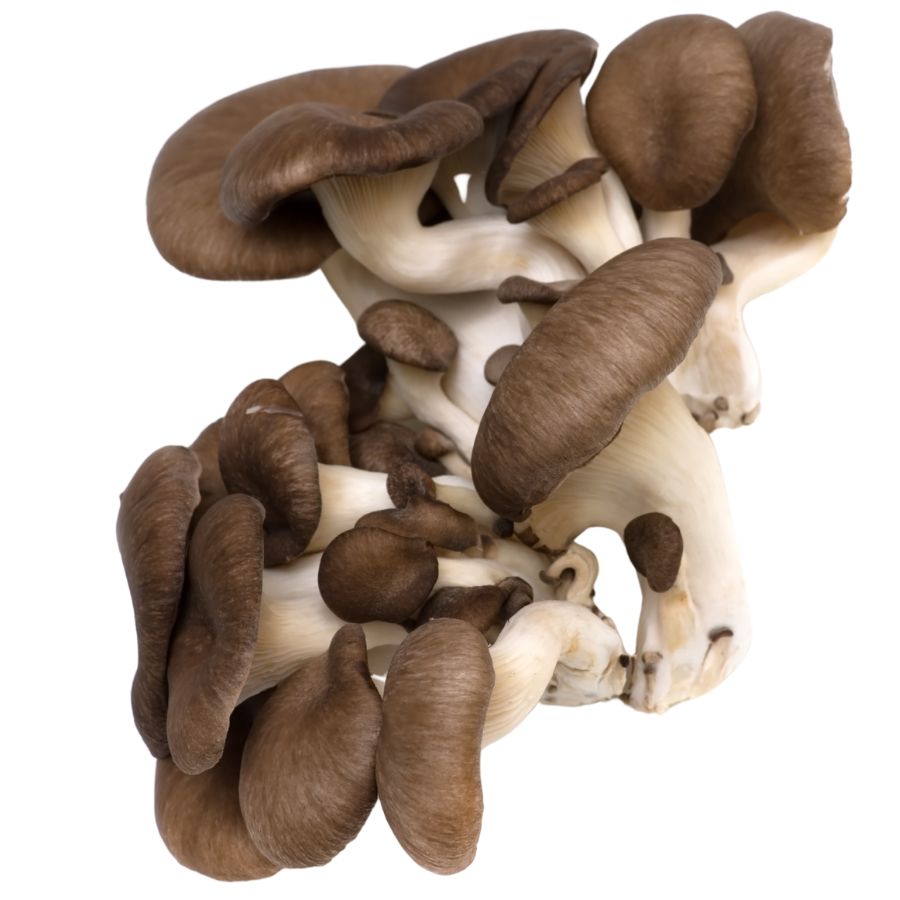
Look for oyster mushrooms growing directly out of logs or stumps, forming overlapping clusters of pale, fluted caps with white gills that stretch downward. The cap shape is typically rounded like a fan or an oyster shell, with a smooth, soft texture.
These mushrooms are completely edible except for any tough or fibrous sections near the base. When cooked, they have a mild, savory flavor and absorb sauces well, making them ideal for stir-fries, pasta, and soups.
They can be confused with toxic lookalikes like the false oyster, which has darker gills and a tougher consistency, or the jack-o’-lantern, which is bright orange and grows from the ground. Checking the substrate—wood only—is one of the easiest ways to avoid mistakes.
Fresh oyster mushrooms usually sell for $10–$20 per pound fresh depending on variety and quality. Their value comes not only from taste and versatility but also from a short shelf life that keeps them in demand from local growers.
Spicebush (Lindera benzoin)
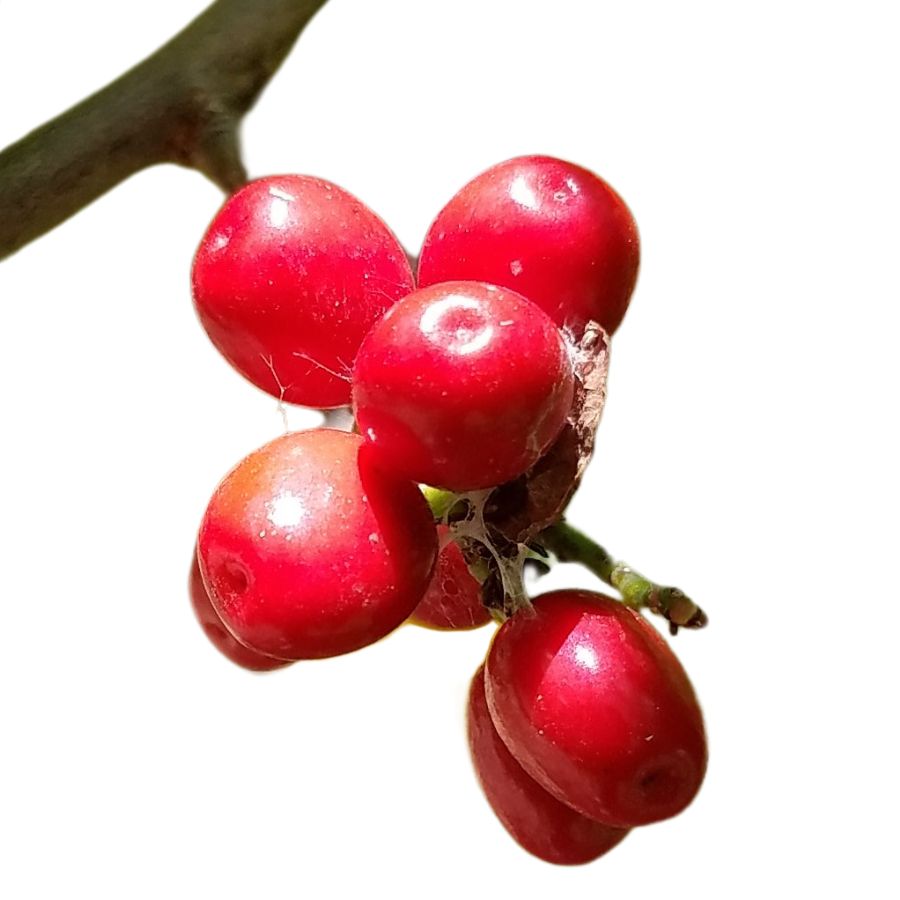
With their bright red color and clustered growth, spicebush berries are easy to pick out once you know the shrub’s distinctive lemon-scented leaves. Some people mix them up with winterberry, but winterberry lacks the spicy scent and has smooth-edged leaves instead of the alternate, veiny ones on spicebush.
The flavor is rich and complex, often described as a cross between black pepper, allspice, and citrus. Foragers usually dry the berries before using them in meat rubs, baked goods, or wildcrafted spice mixes.
Spicebush bark and leaves have traditional uses, but when it comes to edible parts, the berries are what people go after. They’re sometimes steeped whole in broths or ground into powder for stronger flavor.
Because they aren’t cultivated on a large scale, spicebush berries carry a higher value among foragers and food artisans. A small amount can go a long way, especially in recipes that highlight wild-sourced ingredients.
American Hazelnut (Corylus americana)
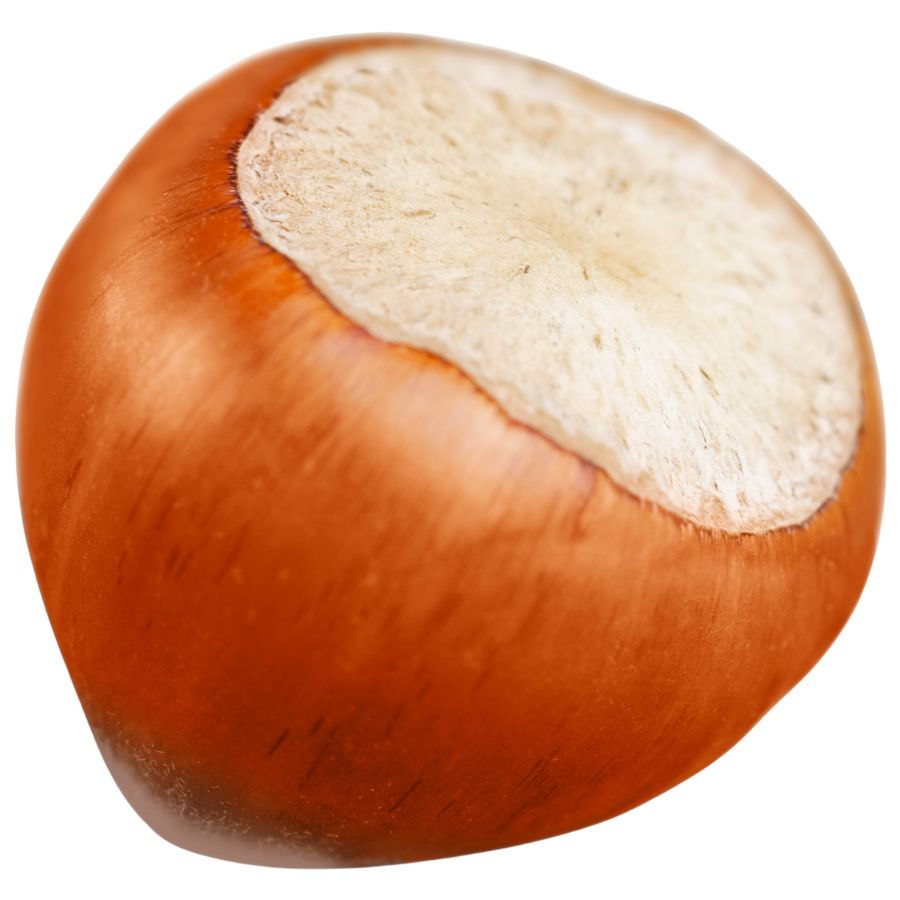
The American hazelnut produces edible nuts wrapped in a fuzzy, leaf-like casing with jagged edges. Its round nuts are sweet and dense, with a creamy texture that gets even better when toasted.
The main lookalike is beaked hazelnut, which has longer husks that taper to a point instead of staying round and leafy. Stick to harvesting only the nut, since the rest of the plant isn’t edible.
American hazelnuts are great for baking, making nut butters, or just snacking on after roasting. Some foragers dry them out completely to use later in cold-weather cooking.
While not as profitable as commercial filberts, these native hazelnuts still bring in decent money when sold in bulk. They’re valuable to anyone who wants a flavorful, nutrient-rich nut that stores well.
Wild Bergamot (Monarda fistulosa)
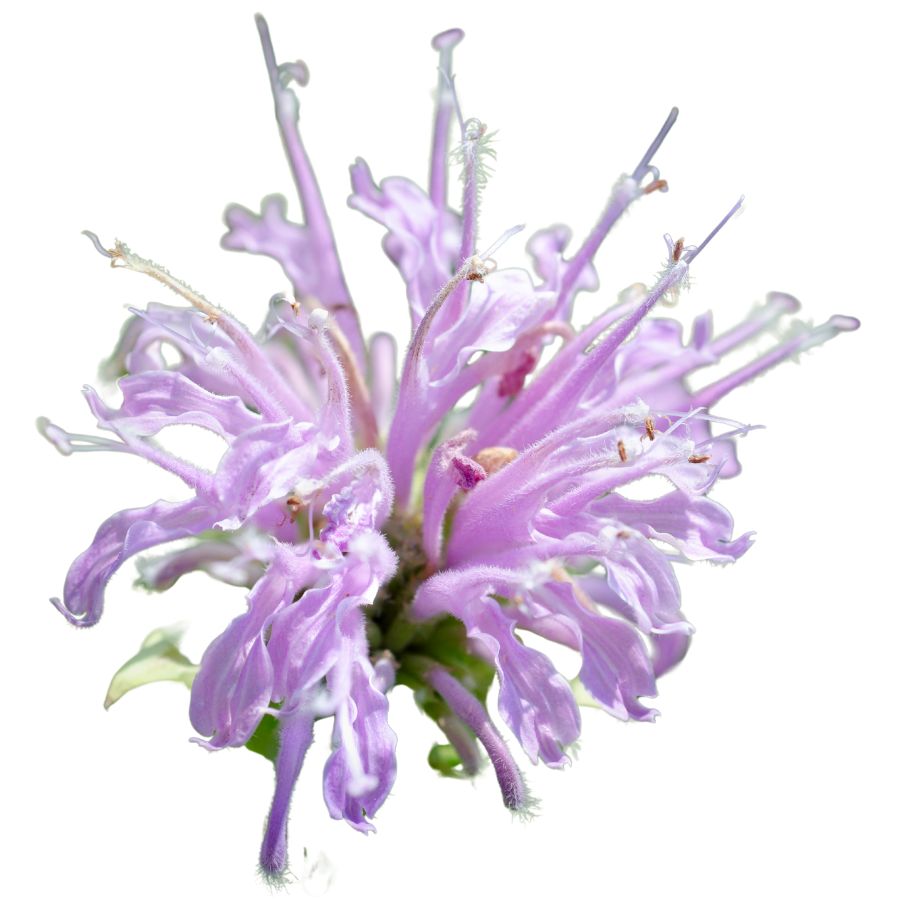
Wild bergamot, which also goes by names like bee balm and Oswego tea, has pale purple flowers that grow in tufted whorls and smell strongly when touched. The square stems and opposite leaves are a good indicator that you’re looking at a plant in the mint family.
The flavor is a mix of thyme and mint, and the texture is slightly coarse, especially when raw. People often use the flowers and leaves fresh in teas or dry them to store in jars.
It’s important to avoid confusing it with similar-looking mints that don’t have the same taste or safe track record. Some varieties of mountain mint, for example, have sharper scents and can cause digestive upset in larger amounts.
Even though it’s not a high-dollar herb, wild bergamot is valuable because of how much flavor you can get from just a few dried petals or leaves. That strong taste also means you don’t need much, which makes it last longer in the pantry.
American Persimmon (Diospyros virginiana)
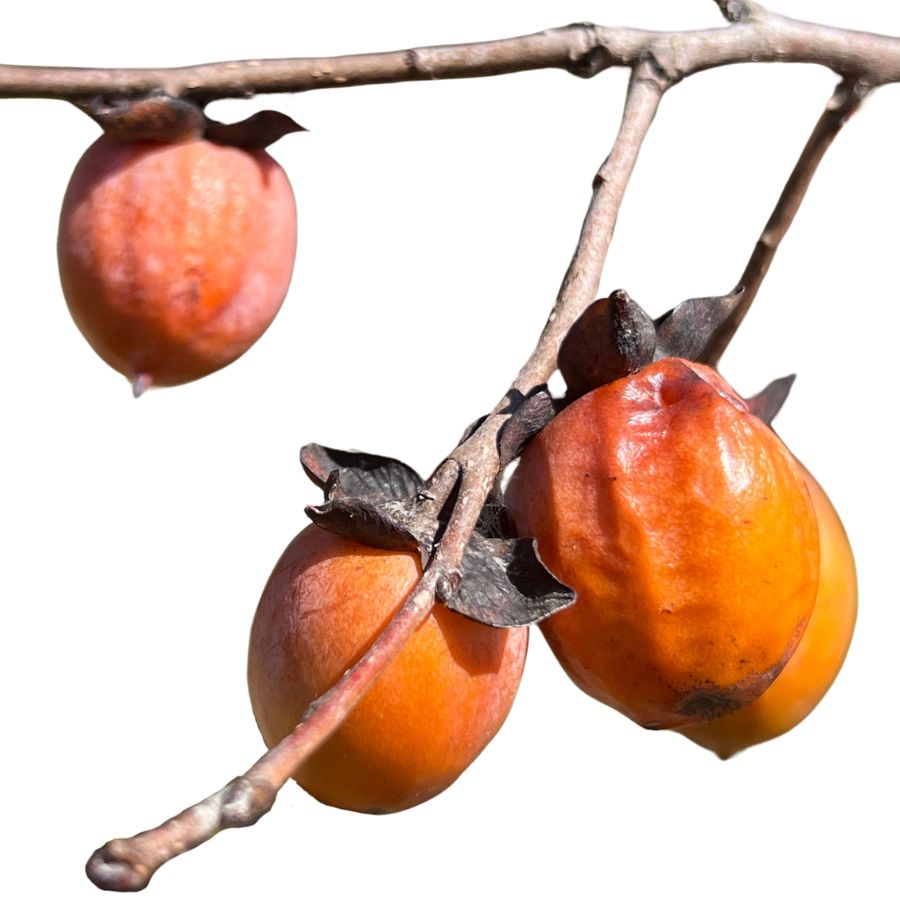
Persimmon fruit has a round shape and orange skin, usually with a slightly pointed end and a leafy cap still attached. It’s easy to bite into a ripe one and find it meltingly soft, with a flavor that’s both sugary and floral.
People sometimes confuse it with wild tomato-like fruits, but persimmons grow on hardwood trees and the fruit has a firmer skin. Avoid eating them when firm and unripe, as they contain tannins that cause a strong puckering sensation.
The pulp is the part most commonly used, and it’s great in baked goods or even frozen into a simple sorbet. Some cooks mash it into jam or dehydrate slices for a chewy snack.
Wild persimmons are valuable more for their flavor than for any consistent market price, though foragers and specialty sellers often get a few dollars per pound. The rich taste and the tree’s ability to grow in various soils make this fruit worth the effort to find.
Jerusalem Artichoke (Helianthus tuberosus)
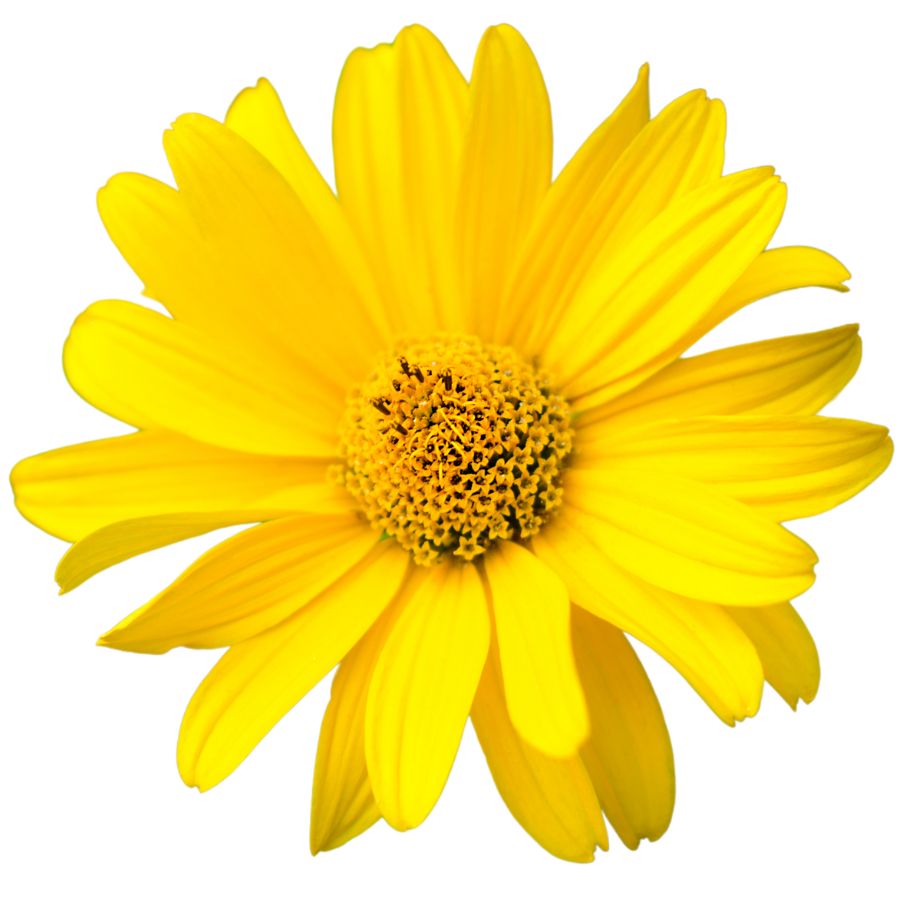
The Jerusalem artichoke is a sunflower relative that grows tall with bright yellow blooms and knobby, potato-like tubers underground. Its underground part is what you eat, while the stems, leaves, and flowers are best left alone.
What makes the tubers interesting is their crisp texture when raw and a nutty, slightly sweet flavor when cooked. They’re often roasted, pureed into soups, or sliced thin for chips.
Some wild sunflowers can look similar, but they don’t form the same type of tubers. If you’re not digging up a bumpy, tan root shaped like ginger, you’re not looking at the right plant.
People value Jerusalem artichokes for their culinary versatility and as a low-starch alternative to potatoes. They sell for a decent price at specialty grocers and farmers markets, especially when freshly dug.
Wild Mint (Mentha arvensis)

The flavor of wild mint is cool, clean, and slightly peppery, especially when the leaves are freshly crushed. Most people use the leaves, but the young stems are edible too when finely chopped.
Wild mint grows low to the ground and produces small, pale purple flowers along the stem. Its most common lookalike is American pennyroyal, which has a similar shape but a much harsher, almost medicinal smell and is toxic in large amounts.
You can dry the leaves for tea or candy them for baking projects, but they’re also good tossed into salads straight from the field. The texture is soft, almost velvety, with a satisfying chew when fresh.
It doesn’t sell for much in bulk, but its value lies in how much use you can get from a small batch. If you’re preserving herbs for your own pantry, it’s one of the best native mints to have on hand.
Blackberry (Rubus allegheniensis)
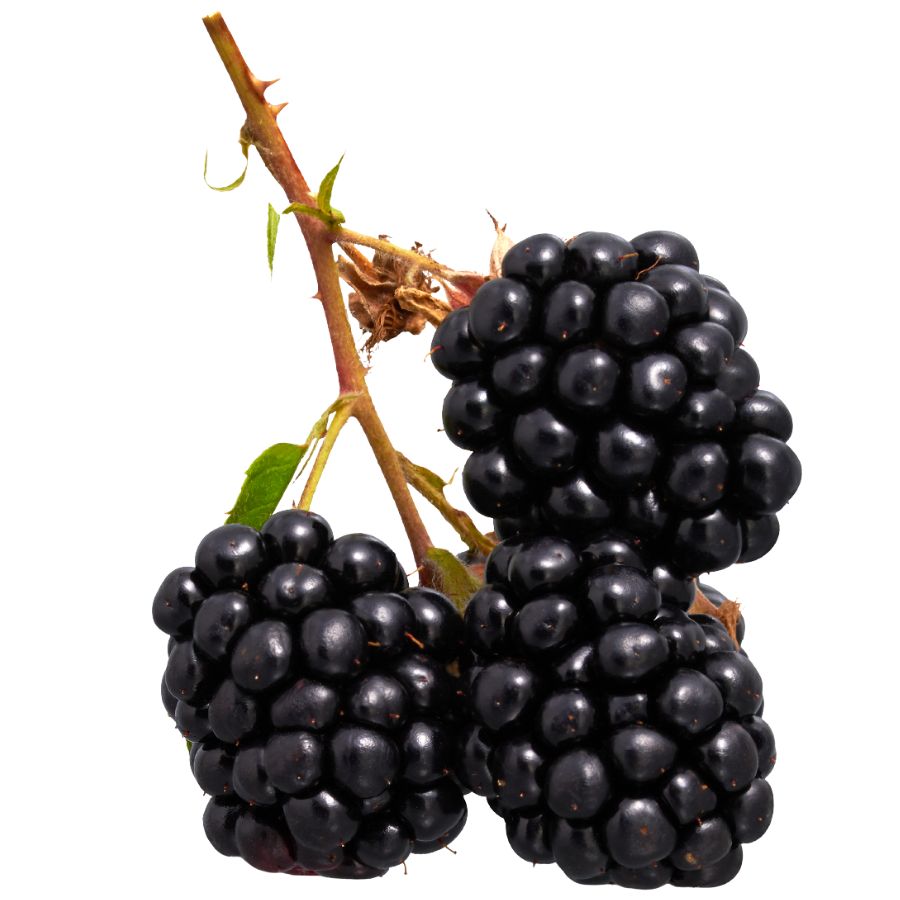
Blackberries grow on arching canes with hooked thorns and have five-petaled white flowers that appear before the fruit. They’re often mistaken for dewberries, but dewberries ripen earlier and usually sit closer to the ground.
Only the fruit is considered edible, and it’s commonly used in pies, jellies, wines, or eaten by the handful. The taste is rich, sweet, and slightly tangy, with a satisfying soft pop when you bite into a ripe one.
Some foragers also use young leaves in teas, but they’re not eaten as food. Be careful when gathering, since the brambles can be dense and the thorns are sharp.
Blackberries are valuable in both local markets and home kitchens because of their versatility and flavor. Depending on the region and demand, foraged blackberries can fetch a decent price, especially when sold fresh.
Black Cherry (Prunus serotina)
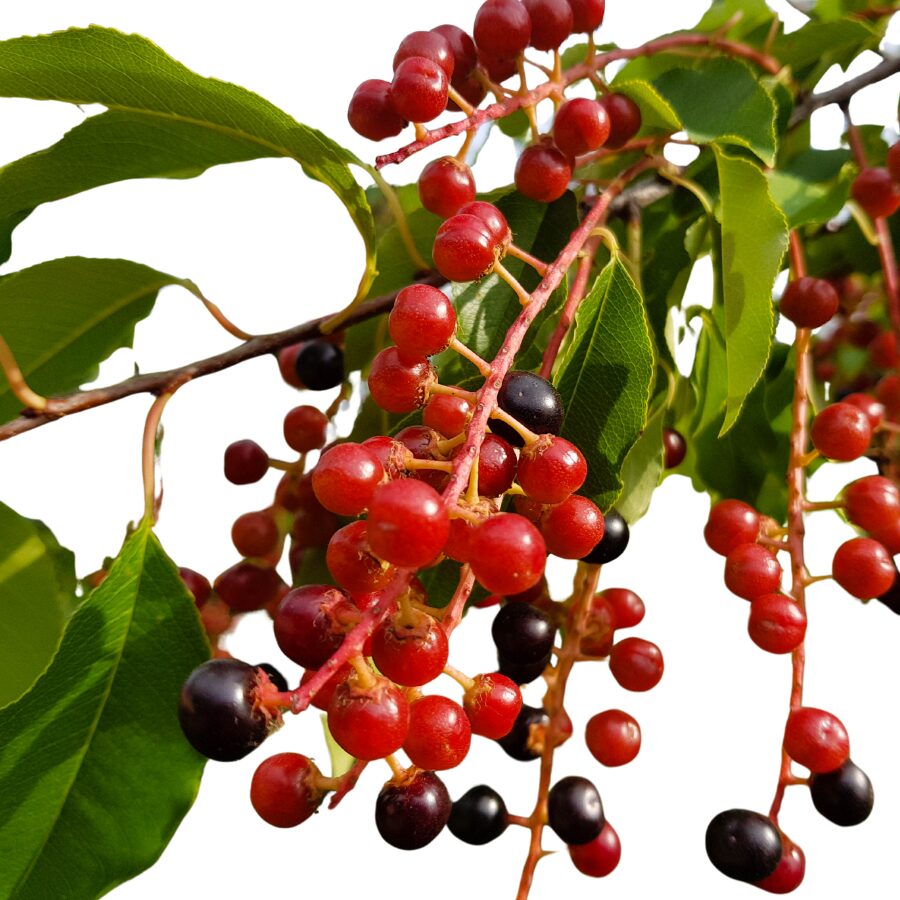
Black cherries are small, glossy, and dark purple to black when ripe, often found in loose hanging clusters. Their raw taste is sharply bitter, but heat transforms the into something much more palatable.
Some foragers mistake these cherries for chokecherry or Carolina laurelcherry, though black cherry leaves are longer and more finely toothed. Only the ripe fruit is safe to eat, and even then, the pits must be removed due to their toxicity.
The fruit is typically simmered into syrup or used as a base for homemade wine and desserts. Its tart profile makes it a good pairing with sugar and spices in traditional recipes.
Black cherry’s greatest value lies in its timber, which is sought after for cabinets and fine woodworking. Still, the fruit has its niche, especially for people making wildcrafted preserves.
Broadleaf Toothwort (Cardamine diphylla)
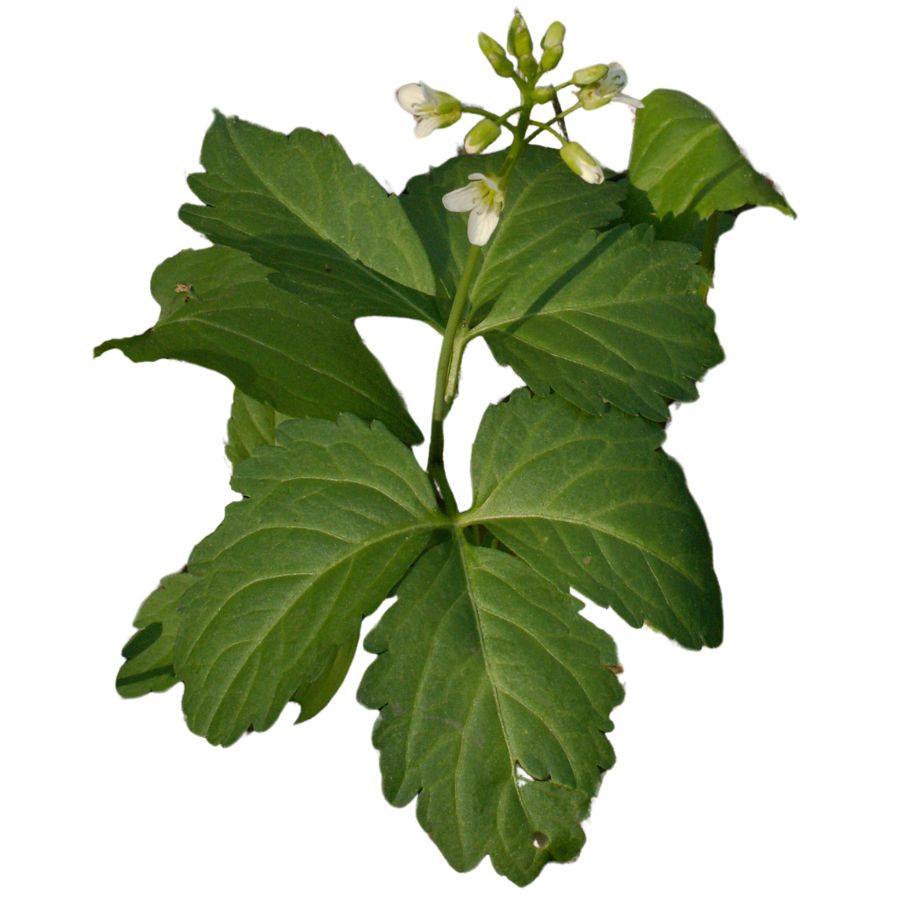
Broadleaf toothwort, also called crinkle root or pepper root, has edible underground rhizomes that look like thick, segmented roots and taste like a mix between horseradish and watercress. The rhizomes are crunchy and spicy, and people often slice them raw into salads or pickle them in vinegar.
The leaves grow in a whorl near the middle of the stem, each divided into three broad, toothed leaflets that give the plant its name. Its white four-petaled flowers look a lot like other members of the mustard family.
A few toxic lookalikes share a similar shape, but broadleaf toothwort’s distinct root structure and leaf arrangement help separate it from those. The plant doesn’t have any edible flowers or stems—only the roots are used.
Even though it’s not sold in large quantities, the flavor is sharp and memorable, making it valuable for foragers who like bold ingredients. Its wasabi-like kick is strong enough that a little goes a long way in most recipes.
Wild Lettuce (Lactuca canadensis)
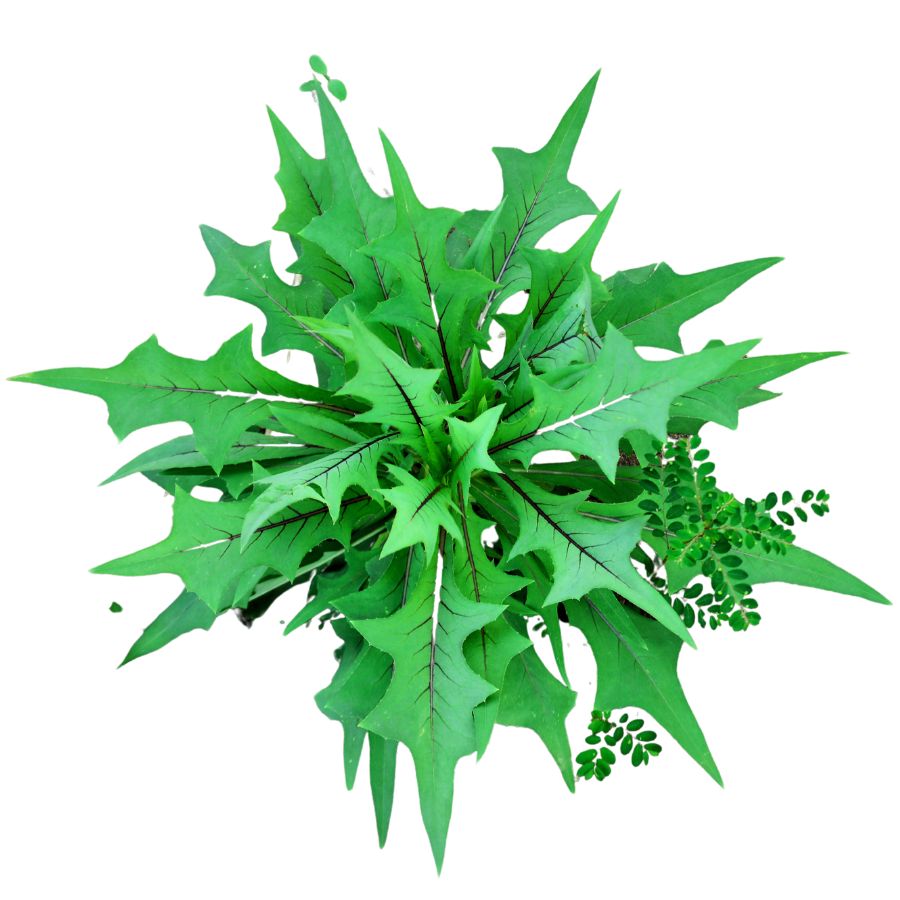
Wild lettuce grows tall with deeply lobed leaves that often have a reddish central vein running through them. The stem leaks a white, bitter latex when broken, which is one of the easiest ways to tell you have the right plant.
The young leaves are edible and have a mildly bitter, earthy taste that some compare to dandelion greens. Most people sauté them or mix them with other greens to soften the flavor.
There are a few lookalikes, including prickly lettuce and sow thistle, but wild lettuce usually has a hairless stem and more elongated leaves. Prickly lettuce has spines along the underside of the midrib, which wild lettuce doesn’t.
The sap contains compounds that have a long history of medicinal use, which is where its value comes in. While the edible parts aren’t particularly valuable as food, the dried sap has been sold online for high prices, sometimes over $100 per pound.
Broadleaf Arrowhead (Sagittaria latifolia)

Broadleaf arrowhead, also called duck potato, is a wetland plant with wide, arrow-shaped leaves and white, three-petaled flowers. Its underground tubers are edible and were traditionally gathered by hand from muddy waters.
These tubers are the only part of the plant you can safely eat. They’re starchy, dense, and slightly sweet, tasting like a cross between a potato and a chestnut.
To cook them, most people boil or roast them, though they can also be dried or sliced thin and pan-fried. The texture stays firm after cooking, which makes them especially good in stews or alongside meat.
Watch out for lookalikes like arrow arum, which shares a similar shape but is toxic and has a different flower structure. Because harvesting is labor-intensive, broadleaf arrowhead doesn’t have a high market price, but it’s valuable for personal use and subsistence.
Where to Find Valuable Forageables in the State
Some parts of the state are better than others when it comes to finding valuable wild plants and mushrooms. Here are the different places where you’re most likely to have luck:
| Plant | Locations |
| Morel (Morchella americana) | – North Fulton County – Ellijay area – Poetry, Georgia (private land) |
| Chanterelle (Cantharellus cibarius) | – Lumpkin County – White County – Athens area (South Milledge) |
| Lion’s Mane (Hericium erinaceus) | – Chattahoochee-Oconee National Forest – Fort Yargo State Park – Tallulah Gorge State Park |
| Black Walnut (Juglans nigra) | – Appalachian bottomlands – Moist floodplains in Georgia – Mixed hardwood forests in Georgia |
| Pawpaw (Asimina triloba) | – DeKalb Memorial Park Orchard – South Georgia pastures – Rich bottomlands near rivers |
| Elderberry (Sambucus canadensis) | – Moist roadsides in Georgia – Urban parks and neighborhoods – Wet meadows and riparian zones |
| Groundnut (Apios americana) | – Throughout Georgia – Wetlands and riverbanks – Coastal Plain regions |
| Chicken of the Woods (Laetiporus sulphureus) | – Northeast Georgia forests – Dead or dying hardwood trees – Forested areas across Georgia |
| Oyster Mushroom (Pleurotus ostreatus) | – Tulip Poplar stands – Dead White Ash stands in bottomlands – Hardwood forests across Georgia |
| Spicebush (Lindera benzoin) | – Moist woodlands in Georgia – Along streams and rivers – Shaded forest understories |
| American Hazelnut (Corylus americana) | – Edges of woodlands in Georgia – Shrubby areas and thickets – Northern Georgia forests |
| Wild Bergamot (Monarda fistulosa) | – Open fields and meadows in Georgia – Sunny forest clearings – Along roadsides and trails |
| American Persimmon (Diospyros virginiana) | – DeKalb Memorial Park Orchard – Open woodlands in Georgia – Fields and pastures |
| Jerusalem Artichoke (Helianthus tuberosus) | – Edges of woodlands – Along streams and rivers – Open fields in Georgia |
| Wild Mint (Mentha arvensis) | – Moist meadows in Georgia – Along stream banks – Wetlands and marshy areas |
| Blackberry (Rubus allegheniensis) | – Forest edges in Georgia – Open fields and clearings – Along trails and roadsides |
| Black Cherry (Prunus serotina) | – Mixed hardwood forests – Forest edges and clearings – Throughout Georgia woodlands |
| Broadleaf Toothwort (Cardamine diphylla) | – Moist deciduous forests – Shaded forest floors – Along streams in northern Georgia |
| Wild Lettuce (Lactuca canadensis) | – Open fields and meadows – Along roadsides and trails – Disturbed areas in Georgia |
| Broadleaf Arrowhead (Sagittaria latifolia) | – Wetlands and marshes in Georgia – Along pond edges and slow streams – Shallow freshwater habitats |
When to Forage for Maximum Value
Every valuable wild plant or mushroom has its season. Here’s a look at the best times for harvest:
| Plants | Valuable Parts | Best Harvest Season |
| Morel (Morchella americana) | Fruiting body (mushroom) | March – April |
| Chanterelle (Cantharellus cibarius) | Fruiting body (mushroom) | June – September |
| Lion’s Mane (Hericium erinaceus) | Fruiting body (mushroom) | September – November |
| Black Walnut (Juglans nigra) | Nuts | September – October |
| Pawpaw (Asimina triloba) | Fruit | August – September |
| Elderberry (Sambucus canadensis) | Flowers, berries | May – June (flowers), July – August (berries) |
| Groundnut (Apios americana) | Tubers, seeds | September – November |
| Chicken of the Woods (Laetiporus sulphureus) | Fruiting body (mushroom) | April – October |
| Oyster Mushroom (Pleurotus ostreatus) | Fruiting body (mushroom) | October – April |
| Spicebush (Lindera benzoin) | Leaves, berries | May – July (leaves), August – October (berries) |
| American Hazelnut (Corylus americana) | Nuts | August – September |
| Wild Bergamot (Monarda fistulosa) | Leaves, flowers | June – August |
| American Persimmon (Diospyros virginiana) | Fruit | September – November |
| Jerusalem Artichoke (Helianthus tuberosus) | Tubers | October – March |
| Wild Mint (Mentha arvensis) | Leaves, stems | April – August |
| Blackberry (Rubus allegheniensis) | Berries | June – July |
| Black Cherry (Prunus serotina) | Berries | July – August |
| Broadleaf Toothwort (Cardamine diphylla) | Leaves, rhizomes | March – May |
| Wild Lettuce (Lactuca canadensis) | Young leaves, sap (latex) | April – June |
| Broadleaf Arrowhead (Sagittaria latifolia) | Tubers | September – November |
One Final Disclaimer
The information provided in this article is for general informational and educational purposes only. Foraging for wild plants and mushrooms involves inherent risks. Some wild plants and mushrooms are toxic and can be easily mistaken for edible varieties.
Before ingesting anything, it should be identified with 100% certainty as edible by someone qualified and experienced in mushroom and plant identification, such as a professional mycologist or an expert forager. Misidentification can lead to serious illness or death.
All mushrooms and plants have the potential to cause severe adverse reactions in certain individuals, even death. If you are consuming foraged items, it is crucial to cook them thoroughly and properly and only eat a small portion to test for personal tolerance. Some people may have allergies or sensitivities to specific mushrooms and plants, even if they are considered safe for others.
Foraged items should always be fully cooked with proper instructions to ensure they are safe to eat. Many wild mushrooms and plants contain toxins and compounds that can be harmful if ingested.

